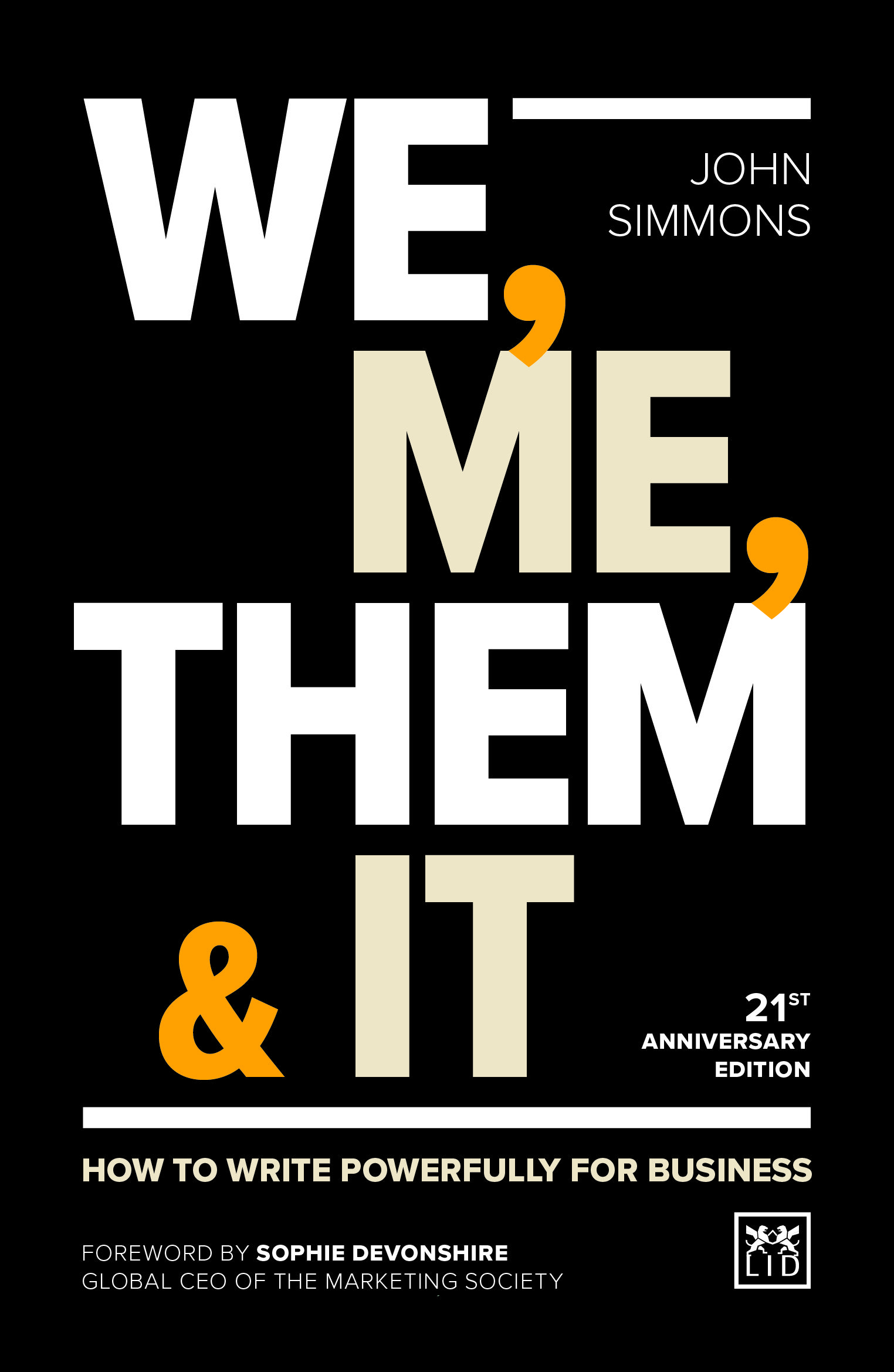|
The trouble with words by John Simmons
By Guest Contributor John Simmons
Author of We, Me, Them & It, John Simmons, explains what’s the trouble, or the joy, with words.
That phrase – the trouble with words – is important to me. It really set me off on my writing of We, me, them & it, and it certainly inspired the first chapter.
It started like this. I carry a notebook around with me, and I use the notebook to record words, phrases, thoughts. Looking back through my notebook, before I’d written a word of the book, I saw “The trouble with words is you never know whose mouths they’ve been in.” It made me smile – but who wrote it? I couldn’t remember. Since then, lesson learned, I always write down the source of any quotation.
Bear in mind I’m going back to the 1990s, the early days of the Internet when our innate instinct was not yet to Google for information – we didn’t have that ability then. I puzzled for weeks, the mystery remained unsolved – until one night, watching TV, a Dennis Potter play was shown. Ah, of course, it had been Dennis Potter who had used the phrase in a Guardian interview.
Perhaps not well-known now, Potter was famous at the time for writing brilliant TV dramas like The Singing Detective. Liberated by this knowledge I started riffing on the phrase ‘The trouble with words’ and a coherent stream of phrases and words began to emerge.
I used many of these in a presentation I was asked to give to an internal conference of WH Smith group companies – as well as WHS itself, these included music and book brands. People from Waterstone’s were in the audience and they liked what I was saying. So began a ten-year creative relationship with the UK’s largest book chain. The trouble with words is you never know where they will lead you.
But, actually, not trouble. The joy of words. I had always felt that joy and I’m never happier than when writing. I discovered that I could write more joyfully in the business world than I had ever imagined. Put simply, it worked. Creative writing for business was effective.
In the case of booksellers like Waterstone’s the link between the core business and words is obvious. But what about other clients? What about companies in finance, industry, telecommunications?
I found that the links are there because, obviously, we all use words. And how should we use them? In ways that are appropriate to the business itself, but that can be more distinctive to the business or brand than they had previously allowed. The practice of tone of voice was created.
Of course, this took place over several years. But those years allowed me to build my own expertise and experience that I could collect into a book. That book was We, me, them & it and, inevitably it now seems, ‘The trouble with words’ was incorporated as a changing phrase into its first chapter.
The joy of words is that they can open up discoveries of new thoughts and ideas, and this is something I continue to enjoy with writing. I’m still on that mission. I want everyone to experience that joy.
ABOUT THE AUTHOR

John Simmons is a leading writer in the world of brands, often cited as ‘the inventor of tone-of-voice as a branding discipline’. The book that set out his philosophy is now being republished by LID in a new edition, 21 years after its first publication. It’s become a cult book since first publication, as relevant today as ever. John went on to found two influential organisations for writers – 26 and Dark Angels – that continue to champion more creative writing for business. He’s the author of many books on brands and writing, as well as a novelist and poet.
Suggested Reading

It’s no good having a good idea if you cannot communicate it to someone else. We, Me, Them & It demonstrates how we can write and use words more creatively and persuasively in business today. From differentiating your company from another, to injecting life and vibrancy into your products and services, to writing everyday emails, this cult business book by the modern-day guru of business writing (now released as a new 21stanniversary edition) shows ways in which we can use words to gain competitive advantage in business life through “tone of voice”.
